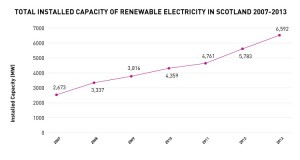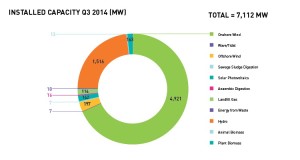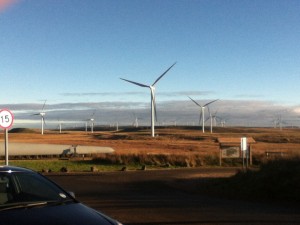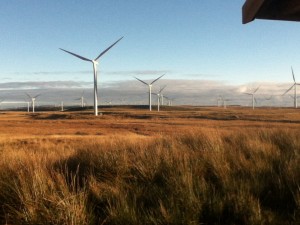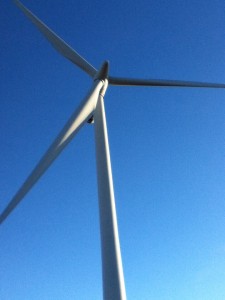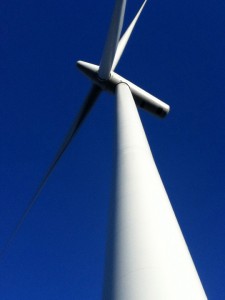After a long hiatus from blogging while I worked on a new book, I am pleased to announce that the book ‘Water, Energy, and Environment – A Primer’ will be published by International Water Association Publishing (IWAP) on February 18th (2019). It will be available in both printed and digital form, and the digital version will be downloadable for free as an Open Access (OA) document.
To access the free digital version go to IWAP’s OA website on Twitter: https://twitter.com/IWAP_OA.
Attached below is front material from the book, its preface and table of contents. Designed to serve as a basic and easily read introduction to the linked topics of water, energy, and environment, it is just under 200 pages in length, a convenient size to throw into a folder, a briefcase, or a backpack. Its availability as an OA document means that people all over the world with access to the internet will have access to the book and its 10 chapters.
With the completion of the book I plan to return to a regular schedule of blogging.
…………………………..
Contents
Preface ………………………………….. xi
Acknowledgement ……………………….. xv
Acronyms ……………………………… xvii
Epigraph ……………………………….. xxi
Chapter 1
Water and its global context …………………. 1
1.1 Earth’s Water Resources . . . . . . . . . . . . . . . . . . . . . . . . . . 1
1.2 Saline Water and Desalination Processes . . . . . . . . . . . 2
1.3 Energy Requirements and Costs of Desalination . . . . . 5
1.4 Demand for Freshwater . . . . . . . . . . . . . . . . . . . . . . . . . . . 6
1.5 Implications of Limited Access to Freshwater . . . . . . . . . 9
1.6 Actions to Increase Access to Freshwater . . . . . . . . . . 10
1.7 Gender Equity Issues . . . . . . . . . . . . . . . . . . . . . . . . . . . . 11
Chapter 2
Energy and its global context ……………….. 13
2.1 Energy’s Role in Society . . . . . . . . . . . . . . . . . . . . . . . . . 13
2.2 Energy Realities . . . . . . . . . . . . . . . . . . . . . . . . . . . . . . . . 14
2.3 What is Energy? . . . . . . . . . . . . . . . . . . . . . . . . . . . . . . . . 15
2.4 Energy Trends . . . . . . . . . . . . . . . . . . . . . . . . . . . . . . . . . . 16
2.4.1 Important questions . . . . . . . . . . . . . . . . . . . . . . . 18
2.4.2 How is energy used? . . . . . . . . . . . . . . . . . . . . . . 18
2.4.3 Electrification . . . . . . . . . . . . . . . . . . . . . . . . . . . . . 21
Chapter 3
Exploring the linkage between water
and energy ……………………………….. 23
3.1 Indirect Linkages . . . . . . . . . . . . . . . . . . . . . . . . . . . . . . . . 24
3.2 The Policy Linkage . . . . . . . . . . . . . . . . . . . . . . . . . . . . . . 25
3.3 The Conundrum . . . . . . . . . . . . . . . . . . . . . . . . . . . . . . . . 25
3.4 Addressing the Conundrum . . . . . . . . . . . . . . . . . . . . . . . 26
3.5 The Need for Partnership . . . . . . . . . . . . . . . . . . . . . . . . . 27
Chapter 4
Energy production and its consequences for
water and the environment …………………. 29
4.1 Impacts . . . . . . . . . . . . . . . . . . . . . . . . . . . . . . . . . . . . . . . . 29
4.2 More on Climate Change . . . . . . . . . . . . . . . . . . . . . . . . . 32
4.3 Environment and Religion . . . . . . . . . . . . . . . . . . . . . . . . 33
4.3.1 The theocentric worldview . . . . . . . . . . . . . . . . . 33
4.3.2 The anthropocentric worldview . . . . . . . . . . . . . 34
4.3.3 Other worldviews . . . . . . . . . . . . . . . . . . . . . . . . . 34
Chapter 5
Energy options ……………………………. 37
5.1 Fossil Fuels . . . . . . . . . . . . . . . . . . . . . . . . . . . . . . . . . . . . 37
5.2 Nuclear Energy . . . . . . . . . . . . . . . . . . . . . . . . . . . . . . . . . 38
5.3 Geothermal Energy . . . . . . . . . . . . . . . . . . . . . . . . . . . . . . 38
5.4 The Sun . . . . . . . . . . . . . . . . . . . . . . . . . . . . . . . . . . . . . . . 38
5.5 Energy Efficiency . . . . . . . . . . . . . . . . . . . . . . . . . . . . . . . 39
5.5.1 Energy demand . . . . . . . . . . . . . . . . . . . . . . . . . . 40
vi Water, Energy, and Environment – A Primer
5.5.2 Implementation . . . . . . . . . . . . . . . . . . . . . . . . . . . 41
5.5.3 Saving energy . . . . . . . . . . . . . . . . . . . . . . . . . . . . 42
5.5.4 Accelerating implementation . . . . . . . . . . . . . . . 43
5.5.5 Energy Star . . . . . . . . . . . . . . . . . . . . . . . . . . . . . . 44
5.5.6 The lighting revolution . . . . . . . . . . . . . . . . . . . . . 45
5.5.7 Energy efficiency in buildings . . . . . . . . . . . . . . . 48
5.5.7.1 Zero energy buildings . . . . . . . . . . . . . 48
5.5.7.2 Electrochromic windows . . . . . . . . . . . 52
5.6 Energy Efficiency in Industry . . . . . . . . . . . . . . . . . . . . . . 54
5.7 Energy Efficiency in Transportation . . . . . . . . . . . . . . . . 56
Chapter 6
Fossil fuels ………………………………. 61
6.1 Coal . . . . . . . . . . . . . . . . . . . . . . . . . . . . . . . . . . . . . . . . . . . 62
6.1.1 Carbon capture and sequestration . . . . . . . . . . 63
6.1.2 A conundrum . . . . . . . . . . . . . . . . . . . . . . . . . . . . . 65
6.2 Petroleum . . . . . . . . . . . . . . . . . . . . . . . . . . . . . . . . . . . . . . 68
6.2.1 Oil spills . . . . . . . . . . . . . . . . . . . . . . . . . . . . . . . . . 68
6.2.2 Peak oil . . . . . . . . . . . . . . . . . . . . . . . . . . . . . . . . . 72
6.3 Natural Gas . . . . . . . . . . . . . . . . . . . . . . . . . . . . . . . . . . . . 76
6.3.1 Methane hydrates . . . . . . . . . . . . . . . . . . . . . . . . . 77
6.3.2 Fracking . . . . . . . . . . . . . . . . . . . . . . . . . . . . . . . . . 80
Chapter 7
Nuclear power ……………………………. 85
7.1 Nuclear Fission . . . . . . . . . . . . . . . . . . . . . . . . . . . . . . . . . 85
7.1.1 Fission fundamentals . . . . . . . . . . . . . . . . . . . . . . 85
7.1.2 Introduction to nuclear issues . . . . . . . . . . . . . . . 87
7.1.3 Issues . . . . . . . . . . . . . . . . . . . . . . . . . . . . . . . . . . . 89
7.2 Nuclear Fusion . . . . . . . . . . . . . . . . . . . . . . . . . . . . . . . . . 91
7.2.1 Fusion fundamentals . . . . . . . . . . . . . . . . . . . . . . 91
7.2.2 Numbers . . . . . . . . . . . . . . . . . . . . . . . . . . . . . . . . 93
7.2.3 Barriers to Fusion . . . . . . . . . . . . . . . . . . . . . . . . . 94
7.2.4 Pros and cons . . . . . . . . . . . . . . . . . . . . . . . . . . . . 95
7.2.5 Thoughts . . . . . . . . . . . . . . . . . . . . . . . . . . . . . . . . 95
Chapter 8
Renewable energy ………………………… 97
8.1 The Sun’s Energy Source and Radiation
Spectrum . . . . . . . . . . . . . . . . . . . . . . . . . . . . . . . . . . . . . . 98
8.2 Direct Solar Energy . . . . . . . . . . . . . . . . . . . . . . . . . . . . . 102
8.2.1 Photovoltaics . . . . . . . . . . . . . . . . . . . . . . . . . . . . 102
8.2.2 Concentrating solar power (CSP) . . . . . . . . . . 108
8.2.2.1 Power tower . . . . . . . . . . . . . . . . . . . . 109
8.2.2.2 Linear concentrator . . . . . . . . . . . . . . 110
8.2.2.3 Dish engine . . . . . . . . . . . . . . . . . . . . . 111
8.2.2.4 CSTP history . . . . . . . . . . . . . . . . . . . 112
8.2.2.5 Advantages and disadvantages . . . 112
8.2.2.6 Thermal storage . . . . . . . . . . . . . . . . . 113
8.2.2.7 Current status . . . . . . . . . . . . . . . . . . . 114
8.2.2.8 Concentrating photovoltaics (CPV) . 115
8.3 Solar Power Satellite (SPS) System . . . . . . . . . . . . . . 116
8.4 Hydropower and Wind Energy . . . . . . . . . . . . . . . . . . . 119
8.4.1 Hydropower . . . . . . . . . . . . . . . . . . . . . . . . . . . . . 119
8.4.2 Wind energy . . . . . . . . . . . . . . . . . . . . . . . . . . . . 121
8.4.2.1 Onshore wind . . . . . . . . . . . . . . . . . . . 121
8.4.2.2 History . . . . . . . . . . . . . . . . . . . . . . . . . 124
8.4.2.3 An onshore limitation . . . . . . . . . . . . . 124
8.4.2.4 Offshore wind . . . . . . . . . . . . . . . . . . . 125
8.5 Biomass Energy . . . . . . . . . . . . . . . . . . . . . . . . . . . . . . . 129
8.5.1 Sources of biomass . . . . . . . . . . . . . . . . . . . . . . 129
8.5.2 Wood . . . . . . . . . . . . . . . . . . . . . . . . . . . . . . . . . . 129
8.5.3 Biofuels . . . . . . . . . . . . . . . . . . . . . . . . . . . . . . . . 130
8.5.4 Algae . . . . . . . . . . . . . . . . . . . . . . . . . . . . . . . . . . 131
8.5.5 Biochar . . . . . . . . . . . . . . . . . . . . . . . . . . . . . . . . . 132
8.5.6 The future . . . . . . . . . . . . . . . . . . . . . . . . . . . . . . 132
8.6 Geothermal Energy . . . . . . . . . . . . . . . . . . . . . . . . . . . . . 134
8.6.1 Sources of geothermal energy . . . . . . . . . . . . . 134
8.6.2 Manifestations of geothermal energy . . . . . . . 135
8.6.3 Uses of geothermal energy . . . . . . . . . . . . . . . . 135
8.6.3.1 Geothermal power generation . . . . . 136
8.6.3.2 Ground-source heat pumps . . . . . . . 138
8.6.4 An unusual source of geothermal energy . . . . 140
Ocean Energy . . . . . . . . . . . . . . . . . . . . . . . . . . . . . . . . . 142
8.7.1 Wave energy . . . . . . . . . . . . . . . . . . . . . . . . . . . . 142
8.7.1.1 Wave energy conversion
devices . . . . . . . . . . . . . . . . . . . . . . . . 142
8.7.1.2 Potential and pros and cons . . . . . . . 143
8.7.2 Ocean current energy . . . . . . . . . . . . . . . . . . . . 144
8.7.3 Tidal energy . . . . . . . . . . . . . . . . . . . . . . . . . . . . . 146
8.7.3.1 Barrage . . . . . . . . . . . . . . . . . . . . . . . . 146
8.7.3.2 History . . . . . . . . . . . . . . . . . . . . . . . . . 147
8.7.3.3 Environmental impacts . . . . . . . . . . . 147
8.7.4 Ocean thermal energy conversion (OTEC) . . 147
8.7.4.1 Barriers . . . . . . . . . . . . . . . . . . . . . . . . 148
8.7.4.2 OTEC technologies . . . . . . . . . . . . . . 148
8.7.4.3 Other cold water applications . . . . . . 149
8.7.4.4 OTEC R&D . . . . . . . . . . . . . . . . . . . . . 149
Chapter 9
Energy storage …………………………… 151
9.1 Storage and Grids . . . . . . . . . . . . . . . . . . . . . . . . . . . . . . 151
9.2 Types of Storage . . . . . . . . . . . . . . . . . . . . . . . . . . . . . . . 152
9.2.1 Traditional and advanced batteries . . . . . . . . . 153
9.2.1.1 Lead–acid . . . . . . . . . . . . . . . . . . . . . . 153
9.2.1.2 Sodium sulfur . . . . . . . . . . . . . . . . . . . 153
9.2.1.3 Nickel–cadmium . . . . . . . . . . . . . . . . . 154
9.2.1.4 Lithium-ion . . . . . . . . . . . . . . . . . . . . . 154
9.2.1.5 Supercapacitors . . . . . . . . . . . . . . . . . 155
9.2.2 Flow batteries . . . . . . . . . . . . . . . . . . . . . . . . . . . 156
9.2.3 Flywheels . . . . . . . . . . . . . . . . . . . . . . . . . . . . . . . 157
9.2.4 Superconducting magnetic energy
storage (SMES) . . . . . . . . . . . . . . . . . . . . . . . . . 158
9.2.5 Compressed air energy storage (CAES) . . . . 159
9.2.6 Pumped storage . . . . . . . . . . . . . . . . . . . . . . . . . 160
9.2.7 Thermal storage . . . . . . . . . . . . . . . . . . . . . . . . . 161
9.3 Applications . . . . . . . . . . . . . . . . . . . . . . . . . . . . . . . . . . . 161
9.4 Costs . . . . . . . . . . . . . . . . . . . . . . . . . . . . . . . . . . . . . . . . . 162
9.5 Fundamental Change . . . . . . . . . . . . . . . . . . . . . . . . . . . 163
Chapter 10
Policy considerations …………………….. 165
10.1 Important Questions . . . . . . . . . . . . . . . . . . . . . . . . . . . 166
10.1.1 Is there a physical basis for understanding
global warming and climate change? . . . . . . 166
10.1.2 Is there documented evidence for global
warming and climate change? . . . . . . . . . . . . 168
10.1.3 Can global warming and climate change be
attributed to human activities, and what are
those activities? . . . . . . . . . . . . . . . . . . . . . . . . 170
10.1.4 What are the potential short- and long-term
impacts of global warming and climate
change with respect to water supply,
environment, and health? What is the
anticipated time scale for these
impacts? . . . . . . . . . . . . . . . . . . . . . . . . . . . . . . 172
10.1.5 What can be done to mitigate the onset
and potential impacts of global warming
and climate change? . . . . . . . . . . . . . . . . . . . . 179
References ……………………………… 183
Index …………………………………… 189
……………………
Preface
This book springs from my strong conviction that clean water and clean energy are the critical elements of long-term global sustainable development. I also believe that we are experiencing the beginning of an energy revolution in these early years of the 21st century. Providing clean water requires energy, and providing clean energy is essential to reducing the environmental impacts of energy production and use. Thus, I see a nexus – a connection, a causal link – among water, energy, and environment. In recent years we have adopted the terminology of the water-energy nexus for the intimate relationship between water and energy, and similarly we can apply the term nexus to the close connections among water, energy, and environment. Thisuse of the term nexus can be, and has been, extended to include the related issues of food production and health. Dealing with, and writing about, a two-element nexus is difficult enough. In this book, I will limit my analysis and discussion to the three-element water -energy-environment nexus and leave the discussion of other possible nexus elements to those more qualified to comment.
This book also springs from my observation that while there are many existing books of a more-or-less technical nature on the three elements of this nexus, a book addressing each of them and their interdependencies in a college-level primer for a broad global and multidisciplinary audience would be valuable. Consideration of these and related issues, and options for addressing them, will be priorities for all levels of government. They will also be priorities for many levels of the
private sector in the decades ahead, both in developing and developed nations. A handbook-style primer that provides an easily read and informative introduction to, and overview of, these issues will contribute broadly to public education. It will assist governments and firms in carrying out their responsibilities to provide needed services and goods in a sustainable manner, and help to encourage young people to enter these fields. It will serve as an excellent mechanism for exposure of experts in other fields to the issues associated with the water-energy-environment nexus. Further, in addition to the audiences mentioned above, target audiences include economists and others in the finance communities who will analyze and provide the needed investment funds, and those in the development community responsible for planning and delivering services to underserved populations.
The book is organized as follows: the first chapter will be devoted to the concept of nexus and how the three elements, water, energy, and environment, are inextricably linked. This recognition leads to the conclusion that if society is to optimize their contributions to human and planetary welfare they must be addressed jointly. No longer must policy for each of these elements be considered in its own silo. Chapters 2 and 3 will be devoted to spelling out global contexts for water and energy issues, respectively. Chapter 4, on related environmental issues, will address the issues of water contamination, oil spills, fracking, radioactive waste storage, and global warming/
climate change. Chapter 5 will be a discussion of energy efficiency – i.e., the wise use of energy – and its role in limiting energy demand and its associated benefits. Chapter 6 will focus on the basics of fossil fuels – coal, oil, natural gas – which today dominate global energy demand. Chapter 7 will discuss nuclear-fission-powered electricity production, which today accounts for 10% of global electricity. It will also discuss the prospects for controlled nuclear fusion. Chapter 8 will discuss the broad range of renewable energy technologies – wind, solar,hydropower, biomass, geothermal, ocean energy – which are the basis of the now rapidly emerging energy revolution. Chapter 9 will discuss the closely related issue of energy storage. Finally, Chapter 10 will address
policy issues associated with water, energy, and environment, discuss policy history and options, and provide recommendations.


